Top SEO Tips For Your Magento 2 Ecommerce Store

Magento is one of the most popular and well-established e-commerce platforms that empower retailers and brands with flexible cloud solutions to innovate and grow rapidly in this competitive period. There are more than 250,000 Magento-powered active e-commerce sites around the world and this accounts for approximately 12 percent of all online stores. The retailers using Magento inflated 3 times faster and it accounted for 1.2 percent of the content management system (CMS) market.
Magento 2 emerged as an advanced shopping cart platform with improvised features including integrated image optimization, the rewriting of URL, and different tools for creating and managing an XML sitemap. Although Magento is already very SEO-friendly when installed, many things can still be improved. So, SEO is the process of improving your store to enhance its visibility for relevant searches in the Google search result pages and driving targeted traffic to the store. The concept of Search Engine Optimization (SEO) in Magento 2 plays a vital role in driving traffic performance to the website. The utilization of well-planned SEO helps in improving brand recognition and improves revenue.
Magento 2 is a powerful platform, and an utilization of Magento 2 SEO features is most important to increase the revenue. It is therefore recommended to apply Magento 2 SEO tips and best practices to drive organic traffic. If you haven’t upgraded or migrated to Magento 2 and are still running your store on Magento 1, we would like to suggest that you upgrade to the latest Magento version to get the maximum SEO advantage out of your online store. We have previously discussed the difference between Magento 1 and Magento 2 to help you understand the importance of migration.
In this article, we will discuss some Magento 2 SEO tips to drive customer traffic to the website. It will help you in improving the performance of your Magento website to rank in search engines including Google, Bing & Yahoo.
So, How to do SEO for a Magento Website?
-
1. Usage of search-engine friendly URLs for improved search results:
SEO rules depict that the URL of the Magento 2 website should be unique and optimized. The following steps can be utilized to enable SEO friendly URLs in Magento 2 stores.
- Initially start with login in your admin area, then go to Stores Configuration General Web.
- When you reach this page click on the tab “Search Engine Optimization” and select Use Web Server Rewrites. Click it to Yes. This will help in eliminating index.php from your URLs.
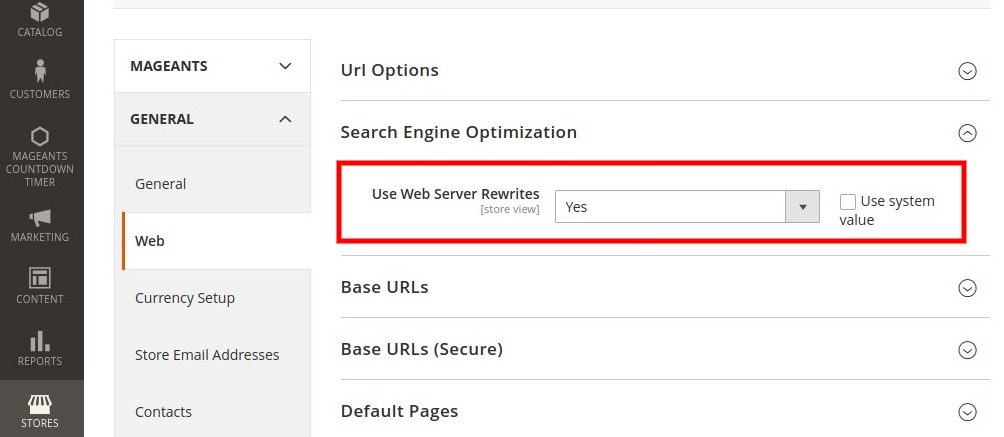
- The final step is clicking on the SAVE CONFIG button.
There is one more method to set the configuration of the Global Search Engine Optimization.
- Go to Stores > Configuration > Catalog > Search Engine Optimization and manipulate the following fields for SEO friendly.
- Enable the Popular Search Terms
- Suffix .html for Product URL.
- Suffix .html for Category URL.
- Select Yes in the Use Categories Path for Product URLs
- Change URL Key to Yes and create Permanent Redirect for URLs
In the Page Title Separator:
- Select Yes for Canonical Link Meta Tag for Categories
- Select Yes for Canonical Link Meta Tag for Products

During this process, you should check whether your Magento 2 is installed in the root directory or not. If it is stored in the root directory, then you are not required to make changes in the .htaccess file, else if it is installed in the sub-directory, then make changes to the .htaccess file.
-
2. The problem-focused on duplicate content in different pages
The problem of duplicate content is one of the problems faced by Magento 2 store owners during the store development phase. This problem can affect the SEO of the website leading to negative scores. Some of the reasons for duplicate content are product filtering and storing, pagination, differences in the same products and categories.
To overcome this problem, you should go through the following procedures:
Stores > Configuration > Catalog > Right side scroll down to Search Engine Optimization > Select Yes for Canonical link Meta Tags for Categories and Products.
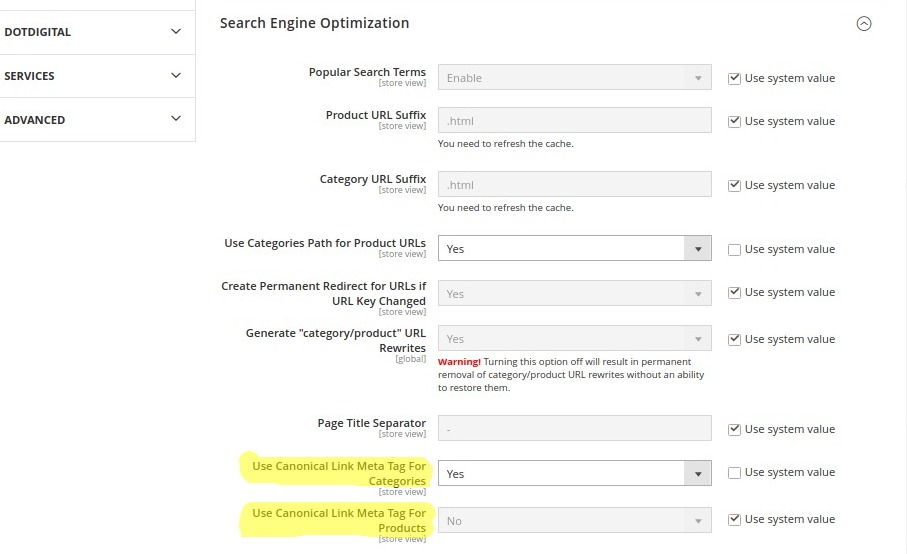
-
3. Improve the speed of e-commerce site for Magento 2
The loading speed of the web page is a prominent ranking factor in Google, therefore you should make sure that your online store is fast enough to compete with ranking. There are many other reasons why retailers should focus on page load time. A high speed site allows you to deliver a better user experience, and also helps in higher conversion rates.
There are mobile-friendly test tools from Google , that allow websites to run smoothly on mobile devices. There are some technical aspects that help in increasing the loading speed of the website.
Those are discussed below:
Step 1.
Enable all caching features
System > Cache Management and Flush Magento cache.
Step 2.
Enable Flat Categories and Products
Stores > Catalog > Catalog > Scroll down to Use Flat Catalog Category and Use Flat Catalog Product > Set Yes > Save Configuration
Step 3.
Merge JavaScript and CSS files. This helps in reducing the load time and increase the speed of the page Stores > Configuration > Advanced > Developer > on the right side
The settings for JavaScript:
Option Merge JavaScript Files: Yes
Option Enable JavaScript Bundling: Yes
Option Minify JavaScript Files: Yes
CSS Settings:
Option Merge CSS Files: Yes
Option Minify CSS Files: Yes
You can hire Magento 2 developer for auditing the code of your website for managing potential SEO issues and improvement areas.
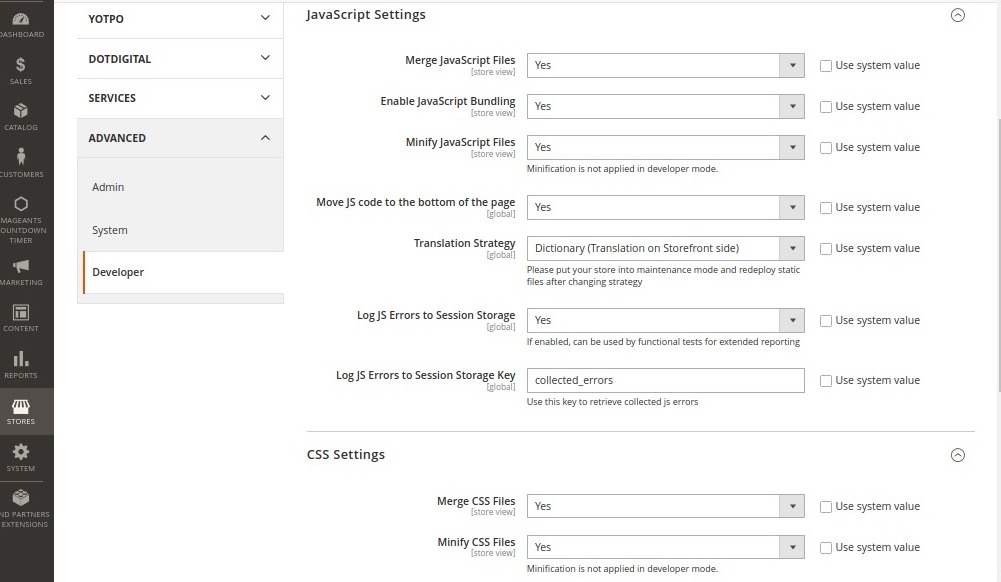
-
4. Modification to Robots.txt files
Robots.txt file is one of the important files that instructs search engine robots to guide which page to crawl. To search the robots.txt file, you have to enter the site URL to the browser and add /robots.txt onto the end.
How to modify the Robots.txt in Magento 2
Go to Stores > Select General > Select Design > Select Edit custom instruction of robots.txt File.
-
5. Optimization of Product Images
In the Magento2 e-commerce site, the images should describe your product, therefore it is important to rank those images in SERP, which allows people to find the variety with a simple search. These instructions should be kept in mind for image setting.
- The images should use the ALT tag. This allows you to describe the image correctly.
- Detailed description of the product in the ALT tag.
- Included meaningful filename that supports the product.
- Use concise, up to the point in the ALT tag.
-
6. Include meta title & description for a product or category and content pages
Meta title and description in Magento 2 web-store offer amazing results if written in a proper pattern. The instructions for its proper utilization is discussed below:
Select the Admin Panel > Go to Products > Select Catalog > Click on Edit product and scroll down to Search Engine Optimization. After that fill in the Meta Title and Meta Description.
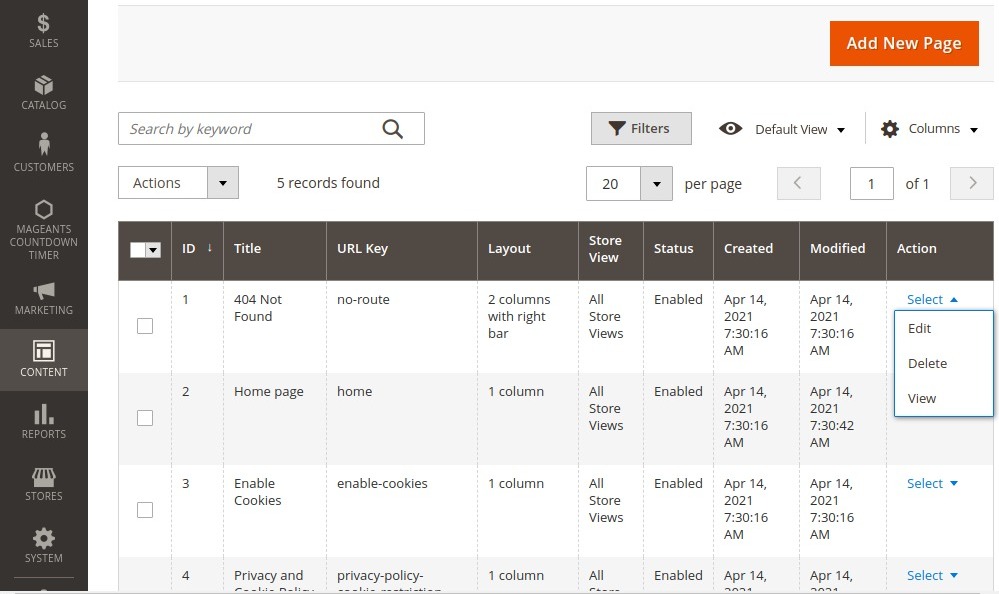
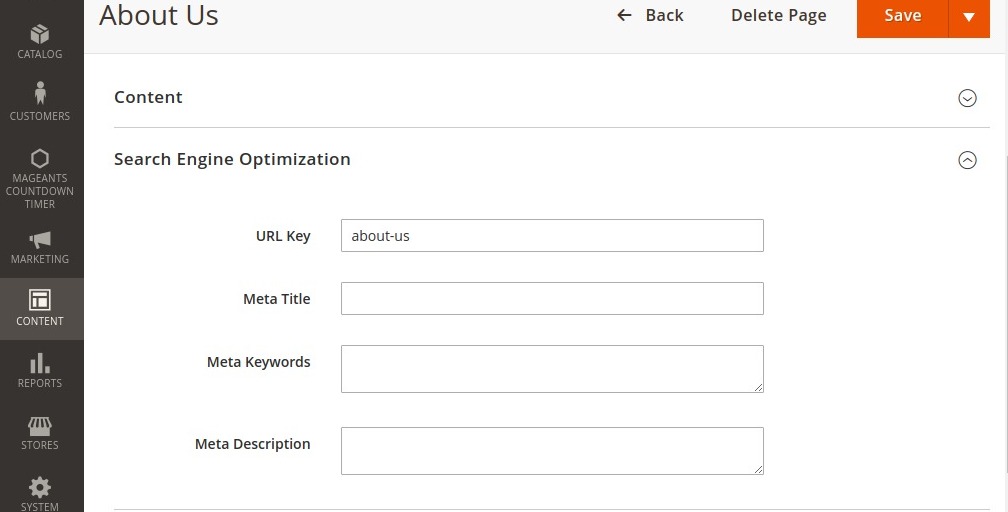
-
7. Changing default title and description in Magento 2
When we configure the Magento store, the default Title and Meta Description are applied automatically. You have to edit these default settings for SEO optimization. This can be done through the following steps:
Go to Magento 2 admin > Go to Content > Go to Design > Select Configuration > On default store view > Click edit.
Scroll down to the HTML Head section where you can edit the default values.
There are necessary instructions for content description in the Title tag and Description tag.
50-60 characters for Title tag and 150-160 characters for Description tag. You can leave the default keyword blank, as it is not used by Google in web ranking.
-
8. Implement an XML Sitemap in Magento 2
An XML sitemap is a file that constitutes all pages of the website. Magento 2 is already equipped with improved XML sitemap functionality.
To enable the XML sitemap to log in to your admin you have to follow certain steps.
Navigate to Stores > Go to Settings > Go to Configuration > Select Catalog > Select XML Sitemap.
After that in the drop-down menu go to settings for Category Options, Product Options, and CMS Pages Options. After that open the Generation Settings and select the options that are presented below.
Option Enabled > Yes
Option Start Time > Insert the time after 00:00
Option Frequency > Choose Daily
Option Error Email Recipient > Blank
Option Error Email Sender > Use System Value
Option Error Email Template > Use System Value
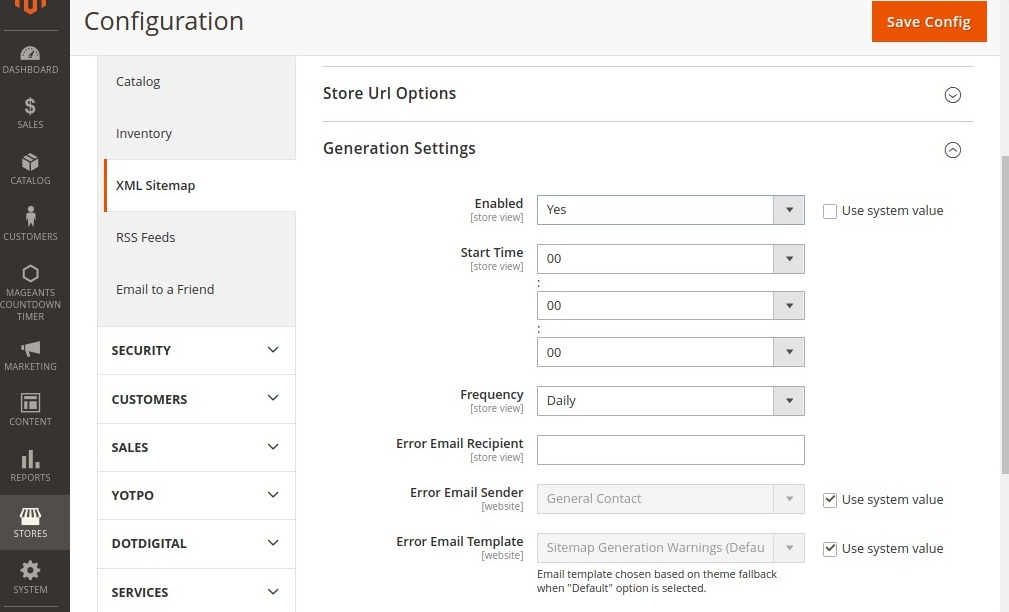
The final step is in the Search Engine Submission Settings set the Robots.txt to Yes and click Save.
-
9. Include a Blog Page on the Magento 2 Store page
Blogs are too important on the website; therefore, you need to know how to include the same in the Magento 2 store. You can use a cost-free blog extension for the Magento 2 e-commerce store without including a third-party framework like WordPress. Try to use Magento 2 blog extension with responsive design, with open source code, and help in developing SEO-friendly blogs.
-
10. Try to include quality links to your Magento 2 Store
Quality links refer to the process of developing relevant inbound links to a website. This will help the website to get higher rankings in the major search engines and allows more traffic to your website. If you want to develop high-quality links then you have to pick the best strategies for your store.
-
11. Structured Data for Rich Snippets
Rich snippets or microdata is one of the advantages of Magento 2 as compared to Magento 1. By default, this feature appears in all product pages and lists only basic tags including name, SKU identifier, rating, and price. For adding more microdata to a snippet, you need to install an extension. According to Moz , a rich snippet improves the meta title and a meta description of metadata with extra information and improves the website CTR (click-through-rates) by 677% and enhances the traffic by 20-40%.
-
12. Voice Search
51% of all online buyers in the US use voice assistance to help them research products. So, the importance of voice search among consumers is gaining popularity not only with Google requests but also with e-commerce websites. To make your website more voice search friendly, following steps need to followed:
- Make your website mobile friendly.
- Try to maintain zero blocks.
- Develop a strong semantic strategy
- Increase the loading speed of the site
- Try to restructure your website.
- Optimise your website for Local SEO
All these steps can help you in making your website compatible with voice search.
-
13. Navigation Optimization:
You can improve the SEO of your website by changing settings of the Improved Layered Navigation extension. Long URLs, filtering results crawling, same content, all these issues can be managed by following some simple rules:
- Include brand pages to indexing
- Try to include more appealing filtered results.
-
14. Using AMP in Magento
There is a rising number of visitors who are using mobile devices for purchase and conversions. Therefore, it is very important to reduce the loading time of your webpage and in this case, you can use accelerated mobile pages (AMP) which is an open-source framework developed by Google for faster experiences on mobile devices. It helps in developing lightweight experiences for mobile by simplifying the HTML code and streamlined CSS rules.
AMP can be important for achieving top rankings on mobile search results. The AMP extension allows automatic generation of AMP Pages for home, category, and product pages. This will help in improving the website’s mobile speed.
Conclusion
These SEO tips can be beneficial for your Magento 2 e-commerce website to get higher rankings. It is, therefore, necessary for e-commerce retailers to go through all points and apply the same in Magento 2 store page. This will help in improving the e-commerce rankings step by step. Our team is well equipped, trained to help and manage all Magento related inquiries. Feel free to contact us.





